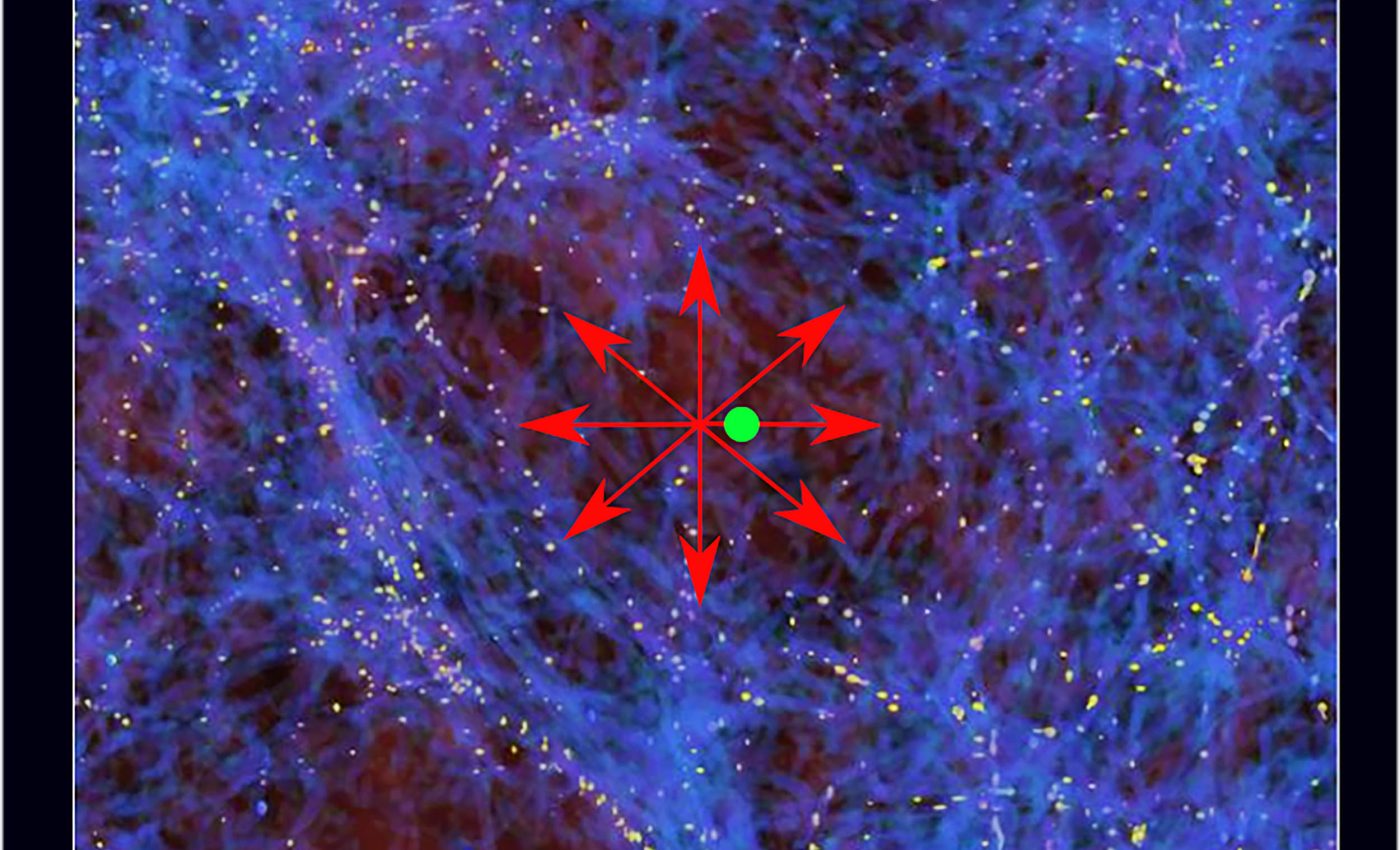
Scientists believe our Milky Way galaxy may be inside a giant 'cosmic void' in the universe
For nearly a decade, cosmologists have wrestled with a nagging mismatch called the Hubble tension. When astronomers measure the expansion of space in the nearby universe, they find a noticeably faster rate than calculations based on the early cosmos predict.
A new analysis presented this week at the Royal Astronomical Society’s National Astronomy Meeting (NAM 2025) proposes an eye-catching fix.
Earth, the Sun, and the entire Milky Way may sit inside an enormous under-dense region – a local void roughly a billion light-years wide.
If true, that cosmic cavity could make galaxies in our neighborhood race away more quickly than observers elsewhere would record. This could resolve the tension without overhauling the laws of physics.
Hubble tension still an issue
Edwin Hubble’s 1929 discovery that galaxies flee from each other led to the Hubble constant, a single number that encapsulates how fast the universe is expanding today. Two principal routes exist for pinning that figure down.
One approach works outward from the present – gauging distances to nearby supernovae, Cepheid stars, and other “standard candles” and clocking their recessional speeds.
The other works inward from the past – using the cosmic microwave background (CMB) and the standard “Lambda-CDM” model to extrapolate forward from 13.8 billion years ago.
The problem is that the first method yields a value around 73 kilometers per second per megaparsec (km/s/Mpc), while the second lands closer to 67 km/s/Mpc.
The statistical gulf is now large enough that random error looks unlikely; something about the universe or our measurements must be off.
Giant void surrounding our galaxy
“A potential solution to this inconsistency is that our galaxy is close to the center of a large, local void,” explained Dr. Indranil Banik of the University of Portsmouth.
If the Milky Way occupies a region where matter density is roughly 20 percent below the cosmic average, gravity would tug material outward toward denser surroundings.
That evacuation would give the appearance of a faster local expansion rate.
To account for the observed Hubble tension, the void – sometimes dubbed the “KBC Void” after earlier proponents – must be vast: on the order of one gigaparsec (about three billion light-years) in diameter.

Less extreme models, however, consider scales nearer to one billion light-years.
Galaxy counts in local surveys do show a relative deficit, lending initial support to the idea. Yet critics argue that such a low-density patch sits uneasily with the prevailing cosmological framework.
This framework predicts that matter should be more evenly distributed on large scales.
Ancient echoes of the universe
The new analysis wades into that debate by examining baryon acoustic oscillations (BAOs) – ripples frozen into the distribution of galaxies and intergalactic gas shortly after the Big Bang.
These ripples act as a “standard ruler,” letting astronomers check how distances scale with redshift at different epochs.
“These sound waves traveled for only a short while before becoming frozen in place once the universe cooled enough for neutral atoms to form,” Banik said.
Because a local void slightly warps the relationship between BAO angular size and redshift, precise measurements across multiple surveys can reveal whether we live in such a bubble. The team compiled two decades of BAO data.
“By considering all available BAO measurements over the last 20 years, we showed that a void model is about one hundred million times more likely than a void-free model with parameters designed to fit the CMB observations taken by the Planck satellite, the so-called homogeneous Planck cosmology,” Banik explained.
In other words, when BAO observations of galaxy distributions are added to the equation, the giant-void scenario far outperforms a homogeneous Lambda-CDM fit.
Clocking the universe’s history
While the BAO evidence is striking, it is not the final word. The researchers next plan to pit their void prediction against cosmic chronometers.
These are galaxies that have ceased star formation and whose stellar populations act as reliable clocks.
By comparing a chronometer’s age to its redshift, scientists can reconstruct the expansion history of the universe without invoking standard candles or early-universe extrapolations.
Combining chronometer data with BAO, supernova, and CMB results should clarify whether the local-void explanation stands or whether something more radical – such as new physics beyond standard dark energy – must be invoked.

Skepticism remains. Many cosmologists contend that a void large enough to surround our galaxy – stretching hundreds of millions of light-years – runs afoul of simulations showing that large-scale density fluctuations should average out.
Other experts note that while local galaxy counts appear low, improved surveys might yet fill in the gap.
“The existence of such a large and deep void is controversial, it doesn’t mesh particularly well with the standard model of cosmology,” Banik said.
Milky Way galaxy, Earth, and the void
Still, the hypothesis has gained renewed attention because it can be falsified. If future chronometer or BAO measurements contradict the predicted pattern, the void proposal will fade.
If, on the other hand, they reinforce it – and independent observations map a sustained under-density spanning a gigaparsec – astronomers may have to re-think what “average” really means for the cosmos.
The idea that our galaxy sits in a vast cosmic void may help explain conflicting measurements of the universe’s expansion rate. It may also help pin down the universe’s true age.
Whether the Milky Way truly resides in a vast cosmic hollow – or the tension hides deeper physics yet undiscovered – remains uncertain. Next-generation surveys and telescopes will soon shed light on the universe’s most persistent riddle.
—–
Like what you read? Subscribe to our newsletter for engaging articles, exclusive content, and the latest updates.
Check us out on EarthSnap, a free app brought to you by Eric Ralls and Earth.com.
—–













